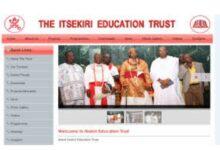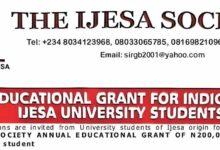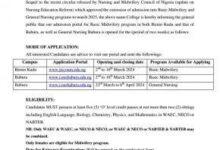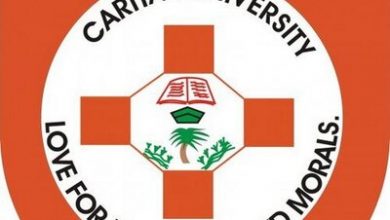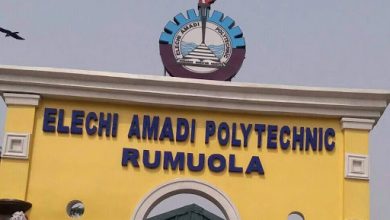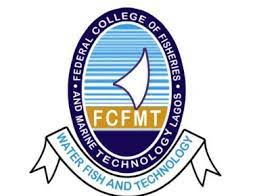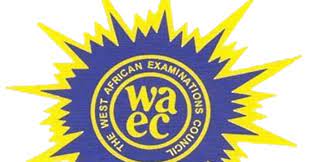
WAEC Syllabus for Economics
WAEC Syllabus for Economics. WAEC Syllabus for Economics is available for all candidates who want to participate in the examination. The West African examination council (WAEC) has officially introduced a syllabus that will guide all the WAEC candidates who wish to write the WAEC examination this year. For a very successful WAEC Economics examination for this year, you need to check out the available areas of concentration. It has been divided into sections with chapters, followed by the topics to be covered in preparation for the exams. In the WAEC Syllabus for Economics, you will also see the format of how the WAEC Economics questions will be presented. Jamb form
There are 2 sections to answer questions from. Paper 1 is Objective questions and paper 2 contains essay questions. Where paper one (1) carries 1 hour for 50 marks. paper two (2) carries 2 hours for 80 marks
👉 Relocate to Canada Today!
Live, Study and Work in Canada. No Payment is Required! Hurry Now click here to Apply >> Immigrate to Canada
This WAEC syllabus is for both the O’level WAEC and General Certificate Examination (GCE) candidates. Final year students in the senior secondary school level and external candidates are eligible to make use of this syllabus and prepare ahead of the examination. WAEC Syllabus for Economics
See the full detailed information concerning the WAEC Economics Syllabus below.
Read Also: WAEC Syllabus for Business Management
PREAMBLE
This syllabus is designed to assess candidates’ knowledge of basic economic principles needed for rational decision making relating to individuals, businesses, government and society. Such knowledge is necessary in enhancing their appreciation of government economic policies, problems of implementation and how they impact on the economy. This will help candidates to understand that economics is not only an academic field of study but also a practical subject.
OBJECTIVES
The syllabus will test candidates’
- knowledge of the basic economic principles, concepts, and the tools for economic analysis;
- understanding of the structure and functioning of economic institutions – commercial, agricultural, industrial and financial institutions; Jamb Result
- understanding of the basis for rational economic decisions;
- ability to explain the basis and structure of the West African economy, including the roles of agriculture, industry and mining and their contributions to the national income;
- ability to follow the role and status of the West African countries in international economic relationships;
- ability to appreciate the problems West African countries encounter in their economic development.
Read Also: WAEC Syllabus for Book Keeping
EXAMINATION SCHEME
There will be two papers – Paper 1 and Paper 2; both of which will be in a composite paper to be taken at one sitting.
👉 Relocate to Canada Today!
Live, Study and Work in Canada. No Payment is Required! Hurry Now click here to Apply >> Immigrate to CanadaPaper 1: will consist of fifty multiple-choice questions to be taken in 1 hour for 50 marks.
Paper 2: will consist of eight essay-type questions in two sections: Sections A and B. Section A will consist of two data response questions. Candidates will be required to answer four questions in all, choosing one question from Section A and any three questions from Section B. The paper shall last 2 hours for 80 marks.
DETAILED SYLLABUS
- DEFINITION AND SCOPE OF ECONOMICS
Scarcity and Choice, Scale of Preference, Opportunity Cost, Production Possibility Curve. Economic activities – Production, Distribution and Consumption. Classification of economic activities – Primary, Secondary and Tertiary and their relative contributions in terms of output/income, employment, savings, investment and foreign exchange.
- FACTORS OF PRODUCTION
Land, labour, capital and entrepreneurship- meaning, characteristics and importance.
- TYPES AND BASIC FEATURES OF ECONOMIC SYSTEMS
- Types – capitalism, socialism and mixed economy.
- Basic features of each
- Advantages and disadvantages of each
- Economic problems of society and the approaches for solving them under each of the systems.
- BASIC TOOLS OF ECONOMIC ANALYSIS
Tables, graphs and charts. Some basic statistical measures and representations – arithmetic mean, median, mode and their simple applications. Dollar to Naira Rate
- DEMAND
Concept of demand and law of demand, the demand schedules and curve, reasons for exceptional demand curves, types of demand (derived, composite, joint and competitive); factors determining demand for goods and services – price of the commodity, prices of other commodities, income, tastes, price expectation, etc. Distinction between a shift of and movement along a demand curve; concept of elasticity of demand. Types of elasticity of demand and their measurement – price, income and cross elasticities of demand: importance of the concept of elasticity of demand to consumers, producers and government.
- SUPPLY
Concept of supply and law of supply, supply schedules and curve, types of Supply – composite, complementary and competitive. Factors determining supply – input prices, technology, prices of other commodities, climatic factors, etc. Distinction between the shift of and movement along the supply curve. Concept and measurement of elasticity of supply and its importance to producers and government
Read Also: WAEC Syllabus for Carpentry And Joinery
- THEORY OF CONSUMER BEHAVIOUR
The utility concepts- total utility, average utility, marginal utility and the calculation of utility schedules. The law of diminishing marginal utility, relationship between total utility, average utility and marginal utility. The concept of equilibrium of a consumer. Determination of consumer equilibrium. The effects of changes in price on consumer equilibrium. The relationship between marginal utility and the demand curve.
- THEORY OF PRICE DETERMINATION
The Concept of the market; interaction between demand and supply. Price determination under free and regulated markets. Equilibrium price and quantity in product and factor markets. The effects of changes in supply and demand on equilibrium prices and quantities. Introduction to algebraic determination of equilibrium price and quantity. Price controls: maximum and minimum price regulations- meaning and their effects; rationing, black market (parallel market)
- THEORY OF PRODUCTION
Production: division of labour and specialization: Scale of production (Internal and External economies), concept of total, average and marginal productivity and law of variable proportions.
- THEORY OF COST AND REVENUE
(i) Cost concepts: total cost, average cost, marginal cost, variable cost, fixed cost;
short run and long run costs.
(ii) Distinction between economist’s and accountant’s view of cost
(opportunity cost and money cost).
(iii) Revenue concepts: total, average and marginal revenue; Marginal revenue
Product
- MARKET STRUCTURES
Concept of a market, characteristics of various market structures, determination of
price and output under different structures – perfect competition and imperfect
competition (monopoly and monopolistic competition). Review of cost and revenue
concepts. Price discrimination. Npower Recruitment
- BUSINESS ORGANIZATIONS
Types and basic features of business enterprises – Sole Proprietorship; Partnership,
Joint- Stock companies (Private and Public), Co-operatives; Statutory Corporation,
Joint ventures. Sources of funds. General and basic problems of business
enterprises. Privatization and Commercialization as solutions to problems of
public enterprises. Indigenization and nationalization policies.
Read Also: WAEC Syllabus for Agricultural Science
- DISTRIBUTIVE TRADE
Process of distribution, role of producers, role of wholesalers, retailers and
co-operatives: the role of government agencies in product distribution and the
problems of distribution and their solutions. Waec Result
- POPULATION AND LABOUR MARKET
(a) Population – determination and implication of size and growth of population, Rural-urban migration, Malthusian theory of population Geographical, age, sex and occupational distribution. Importance and problems of census. Population and economic development (under-population, optimum population and over- population).
(b) Labour Market
- Concept of labour force and human capital, efficiency and mobility of labour, factors affecting the size of the labour force, particularly the population characteristics (age, sex, occupation, education, etc.)
(ii) supply of and demand for labour: wage determination. Concept of
unemployment and underemployment, Trade Unions, Employers’
association and Government policies on labour and wages. Jamb form
- AGRICULTURE
Structure (e.g. food crops, export crops, livestock, fisheries): systems of
agriculture
(peasant, commercial, co-operative and state farming); importance of agriculture
to the national economy: marketing of agricultural products (commodity boards).
Agricultural policies (minimum agricultural prices) problems of agriculture and
remedies.
- INDUSTRIALIZATION
Meaning and types of industry. Definition of industrial concepts: plant, firm,
industry and industrial estates. Location of industry, localization, role of
industrialization in economic development. Strategies of industrialization.
Problems of industrialization.The link between agricultural and industrial
development.
- NATIONAL INCOME
Meaning of major national income concepts e.g. Gross Domestic Product, Gross
National Product. Net National Product, etc. Different ways of measuring
national income and their problems. Uses and limitations of national income
data; trends and structure of national income.
- MONEY AND INFLATION
- Money – definition and historical development-barter and its problems, types,
characteristics functions. Supply of and demand for money, value of money
and the price level.
(b) Inflation: meaning types, causes, effects and control.
- FINANCIAL INSTITUTIONS
Types (traditional, Central Bank, Commercial Bank, Development Bank,
Merchant Bank, and Insurance Companies, Building Societies) : development
and functions of financial institutions. Money and capital markets; meaning,
types and functions
- PUBLIC FINANCE
Fiscal policy and objectives of public finance: Sources of government revenue.
Taxation -types(direct and indirect),objectives, merits, demerits and incidence;
Principles/canons of taxation; Rates of taxation(proportional, progressive and
regressive) direct and indirect taxation: incidence and effects of taxes, composition/
structure of public expenditure (recurrent and capital expenditure): effects of
public expenditure. Government budget and the national debt.
- ECONOMIC DEVELOPMENT AND PLANNING
Meaning of economic development, distinction between economic growth and
development, characteristics and problems of developing countries, elements of
development planning (objectives of planning, and problems of planning). Types
of plans (short term, medium term, perspective or long term, rolling plan etc.).
- INTERNATIONAL TRADE AND BALANCE OF PAYMENTS
(a) International Trade: differences between domestic and international trade, the
basis of international trade, absolute and comparative cost advantage, terms of
trade (definition and measurement) commercial policy (objectives) and
instruments – tariffs (types) and direct control. Trend and structure of West
African countries’ external trade.
- Balance of Payments: role of money in international transactions, meaning and components of balance of payments, balance of payments disequilibrium, balance of payments adjustments (exchange rate policy exchange control, monetary and fiscal policies) and financing (the use of reserves and international borrowing).
- ECONOMIC INTEGRATION
Economic Integration (objectives, levels of and features). Development and
problems of economic integration in West Africa- ECOWAS
- INTERNATIONAL ECONOMIC ORGANIZATIONS
Development and role of:
– Organization of Petroleum Exporting Countries (OPEC)
– Economic Commission for Africa (ECA)
– International Monetary Fund (IMF)
– International Bank for Reconstruction and Development (IBRD)
– African Development Bank (AfDB)
– United Nations Conference on Trade and Development (UNCTAD)
etc. relevance of such organizations to West African Countries
- MAJOR NATURAL RESOURCES
Development of major natural resources (petroleum, gold, diamond, timber, groundnut etc) effects on West African economies (positive and negative).
Check and confirm: How Much is Dollar to Naria Today
